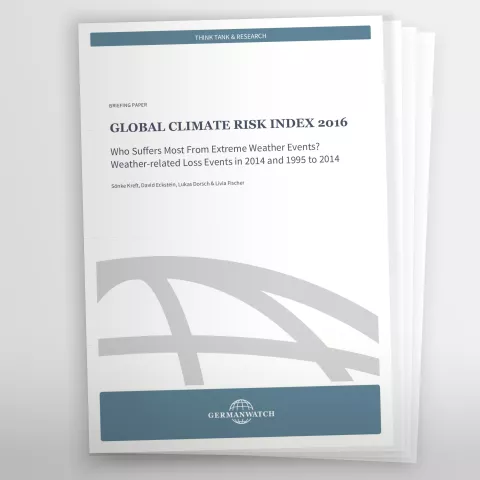
The Global Climate Risk Index 2016 analyses to what extent countries have been affected by the impacts of weather-related loss events (storms, floods, heat waves etc.). The most recent data available - from 2014 and 1995–2014 - were taken into account. The countries affected most in 2014 were Serbia, the Islamic Republic of Afghanistan as well as Bosnia and Herzegovina. For the period from 1995 to 2014 Honduras, Myanmar and Haiti rank highest.
This year's 11th edition of the analysis reconfirms that, according to the Climate Risk Index, less developed countries are generally more affected than industrialised countries. Regarding future climate change, the Climate Risk Index may serve as a red flag for already existing vulnerability that may further increase in regions where extreme events will become more frequent or more severe due to climate change. While some vulnerable developing countries are frequently hit by extreme events, there are also some others where such disasters are a rare occurrence.
The Paris climate summit is the keystone to an international year advancing several international policy issues relevant to reduce impacts of extreme events. Paris needs to deliver a farreaching and durable climate regime that safeguards affected populations through the agreement of a global adaptation goal, an adaptation policy cycle, support for adaptation investments and an international agenda to address loss and damage.




